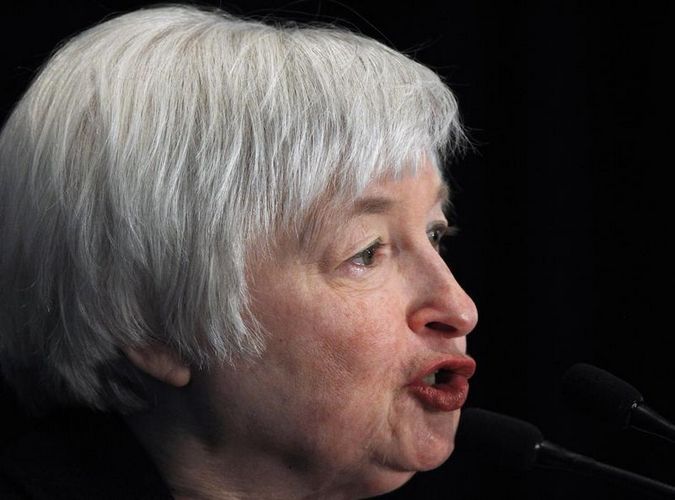Borrowers are being warned that the days of insatiable demand for their short-dated corporate bonds are numbered, now that Fed Chair Janet Yellen has in effect given next April as a date when the Fed could start hiking rates.
Treasury yields gapped out by as much as 16bp at the short end on Wednesday, after Yellen said six months was about the time after tapering ends that the Fed might start to hike the Federal Funds rate.
If the Fed continues the current pace of tapering its bond purchases, then September/October could be the time when it has exited its stimulus programme altogether. Six months from October is April next year.
Although corporate bond spreads barely moved on the news, many strategists believe corporate cash managers and retail investors who have parked hundreds of billions of dollars at the short-end of the corporate curve are still in a state of denial.
“The front end of the credit markets has attracted a huge amount of inflows over the last six to nine months and is now a very crowded trade,” said Jason Shoup, head of investment grade credit strategy at Citigroup.
“I’m not saying that investors at the front-end will lose their shirts as rates rise. But if you are among the many investors who have been using the short-end of the curve as a cash substitute or a safe haven from duration, then losing anything will be a shock.”
In the year to-date, corporates have sold almost US$150bn at five-year tenors and shorter – more than half of all US dollar investment-grade bonds issued.
Order books in multi-tranche deals have also been overwhelmingly skewed towards shorter-dated bonds, and issuers have been virtually guaranteed access to the market even during the worst risk-off days if they have been willing to tap the pool of demand for shorter-tenor instruments.
“The front end may not be as safe as the market was led to believe, and clearly there’s the risk of outflows and wider front-end credit spreads”
Driving demand has been retail investors pouring into the front end after being advised that doing so would safeguard them from losses on longer duration bonds in a rising rate environment.
Corporate cash managers have also been huge buyers of shorter-dated bonds, having been lulled into a sense of security by the low volatility at the front end over the past several years due to the Fed’s stimulus programme anchoring that part of the yield curve.
Not risk-free
Short-dated bonds will still be in demand, according to underwriters, but further rate volatility in short-dated Treasury yields will eventually highlight to the droves of ultra-conservative investors that have moved into short-dated bonds that such paper is not risk-free.
“What’s made the front end crowded and risky is that the Fed, through forward guidance, has successfully persuaded investors that short-term interest rates will be anchored for a considerable period of time,” said Hans Mikkelsen, credit strategist at Bank of America Merrill Lynch.
“But now the front end may not be as safe as the market was led to believe, and clearly there’s the risk of outflows and wider front-end credit spreads.”
That means less ability to squeeze price on three-year and five-year notes.
“What we tell clients is that there is a risk that the Treasury yield curve will continue to flatten and if it does then we could see some of the money that has been piling into the front end of the credit market move elsewhere,” said Andrew Karp, head of investment grade syndicate for the Americas at BofA Merrill.
Investors might follow institutional investors and seek out long-dated paper, but the proliferation of non-traditional and unconstrained funds in the past six months is a signal that investors are viewing the bond market as a far more complicated place than it has been for the past four years.
“Where you put on duration and where you don’t is very specific to names, sectors and asset classes,” said Michael Collins, senior portfolio manager at Prudential, who likes the back end – where pension funds are buying aggressively.
“Some people find rate risk so difficult to deal with that they are going into non-traditional unconstrained funds, where managers hedge out interest rate risk and move up and down the curve according to relative value, the shape of curves and the technicals in different markets.”
